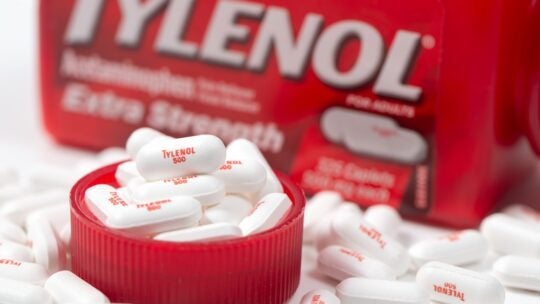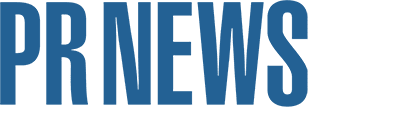
Reputation is a healthcare brand’s most valuable and most fragile asset.
In an industry built on human need and vulnerability, trust is the currency. It takes years to earn, but it can vanish overnight. Sometimes, the breach is subtle. Other times, it’s a headline—sudden and unavoidable. Then there are moments when history resurfaces to test whether the values a brand once stood for still hold true.
Perfection isn’t the goal. Consistency and transparency are. How healthcare brands respond when trust meets skepticism reveals who they are, and whether they still deserve to be believed.
Let’s look at three brands with very different types of reputational pressure:
- BetterHelp: When a breach of privacy broke the emotional contract
- UnitedHealth/Change: When a cyberattack shattered the operational one
- Tylenol: When historic trust met a modern test—and wavered
Each shows how a brand’s response can miss or meet the moment, not just legally, but authentically.
BetterHelp: A Break In Emotional Trust
Between 2017 and 2020, BetterHelp shared user data, including sensitive mental health questionnaire responses, with advertising platforms. In 2023, the FTC fined the company $7.8 million and required it to adopt major privacy reforms.
But the real damage wasn’t regulatory. It was relational.
BetterHelp users aren’t customers in a typical sense. They’re people asking for help, often in their most vulnerable moments, navigating personal struggles. Reaching out for therapy can be an act of courage. Doing it online, behind a screen that offers a sense of safety, takes even more. That’s why the breach appeared as a personal betrayal: the harm wasn’t physical, but emotional. It broke the most sacred promise a mental-health brand can make: “You’re safe here.”
The company’s response was defensive in its tone: denying wrongdoing, pointing to “industry standard” practices, and insisting no names or clinical session notes were shared. Technically true, maybe—but emotionally tone-deaf. Consumers expected an excess of care, not the minimum threshold of compliance. That’s the difference between trust and tolerance.
Authentic opportunity missed: What people needed wasn’t a legal argument. It was a human one. “You trusted us with your pain. We didn’t protect that trust. We’re sorry. Here’s exactly what we’ve changed to make sure it never happens again.” That statement could have resonated.
UnitedHealth/Change Healthcare: When Operational Trust Collapsed
In February 2024, Change Healthcare, a key subsidiary of UnitedHealth Group, was hit by a ransomware attack that disrupted claims, prescriptions and patient services nationwide. By 2025, the company confirmed that the breach had affected approximately 190 million individuals.
Change Healthcare isn’t just another back-office vendor. It’s part of the infrastructure that keeps healthcare moving. It is deeply integrated into the systems that power hospitals, pharmacies, clinicians and payors. To be clear, when that engine failed, everyone felt it.
UnitedHealth’s public response evolved in cadence and tone as the scope and scale came into focus. CEO Andrew Witty acknowledged the severity:
“We know this attack has caused concern and been disruptive for consumers and providers, and we are committed to doing everything possible to help and provide support to anyone who may need it.”
Later, Witty emphasized that the new environment had been rebuilt “literally from scratch” so that “there are not elements of the old attacked environment within the new technology.”
That kind of clarity, “we’re not patching; we’re replacing,” is exactly the kind of operational accountability stakeholders needed to hear.
But while the facts were clear, the feelings were missing. The language remained formal, fact-driven and heavily “lawyered.” That’s not surprising. A response of this scale likely passed through dozens of internal reviews, including more than a few attorneys. But even within those constraints, there was room for empathy and emotional clarity. Millions of patients couldn’t get medications. Providers couldn’t get paid. Families couldn’t move through the system. They were stuck. Those disruptions were human, not just systemic.
Authentic opportunity narrowed, but not lost: A statement like “We know this has disrupted lives, not just workflows. We’re rebuilding everything with that in mind,” would have added dimension and humanity without triggering undue legal risk. It’s possible to protect the enterprise and acknowledge the people.
Tylenol: When The Past Returns
In 2024-25, Tylenol faced renewed scrutiny as a wave of lawsuits reignited public debate over its use during pregnancy. The scientific consensus hadn’t changed, but the headlines had—and public concern followed. The story continued to gain traction and pushed the brand back into the headlines.
Kenvue, Tylenol’s parent company, responded with precision: A series of measured, scientific statements, investor messaging and FDA citations. They denied causation. They emphasized that Tylenol remains FDA-approved and backed by medical consensus. Technically solid, emotionally cold.
It wasn’t just what they said, it was what they didn’t. There was little acknowledgement that expecting parents might be frightened, confused or simply seeking clarity. The brand treated it like a liability problem. But to many consumers, it felt personal.
And that contrast stung. Because Tylenol once set the standard for how to show up when safety was at stake.
In the 1980s, Johnson & Johnson famously recalled Tylenol nationwide after cyanide-tampering incidents. The company acted fast. It pulled product off shelves. It redefined packaging safety. And it communicated with the public transparently and empathetically. That playbook became the gold standard of crisis response.
What changed? In the 1980s, the brand responded to fear. Today, it responded to risk.
Authentic opportunity missed: Even without conceding the claims, Kenvue could have addressed the emotional reality for parents: “We understand this news is upsetting. Here’s what we know. Here’s what we’ll continue to study. Here’s how we’ll keep you informed.” That message, even paired with science, would have honored the emotion without compromising the science.
What Can Healthcare Brands Learn When Trust is Tested?
When skepticism hits, healthcare brands have a choice: they can double down on protection or step up with authenticity. The choice shapes everything that follows.
Authenticity doesn’t mean confession. It means clarity. It means candor. And above all, it means remembering who your audience is. It means returning to the brand promise made to the people served—what they brand told consumers they could expect from it. Deliver on that when it matters most. Especially when it’s uncomfortable.
People. Not claims. Not risk pools. Not stockholders.
Just people. Who trusted you. And want to know they still can.
Rick Toller, APR, is Head of Strategic Communications at Unlock Health.
